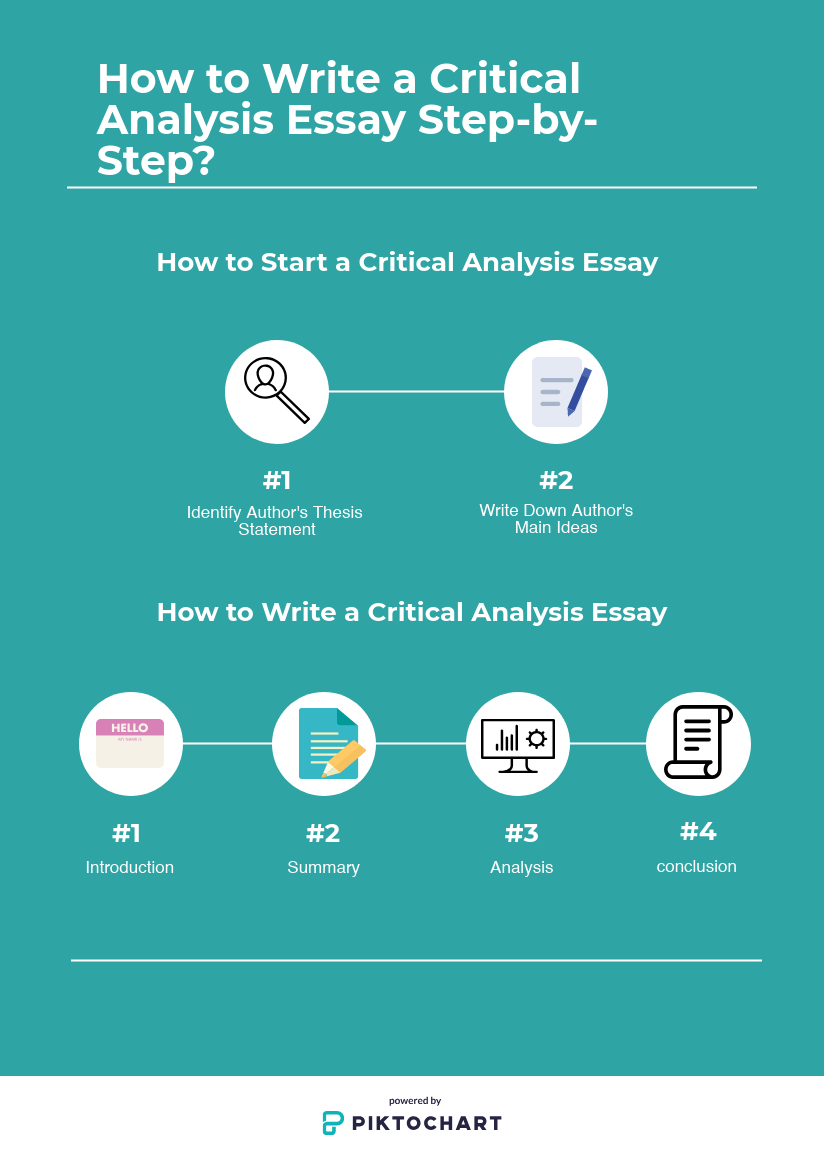The reaction of many students, when given a class assignment to write a critical analysis paper, is the panic. If you are one of them, you have come to the right place as we will tell you the necessary steps to write a critical analysis essay that will get you good grades.
What is a Critical Analysis Essay?
Before you start writing, it is best to know what your professor has asked you to do. Basically, every work of art is subject to criticism. If you have ever watched or read a movie, book or album review, you know what a critical analysis is. The author of that review broke down the author’s work and studied the parts and wrote it down in order to increase the reader’s understanding of the source material. This is essentially what you must also do, only in the form of an academic essay. Your professor gives you this assignment in order to gauge your critical reading, thinking, and writing skills.
How to Start a Critical Analysis Essay
You also need to familiarize yourself with the book, film or painting that you must critique before you start writing. So read the book, watch the film or look at the painting at least once. Also, make sure that you understand the requirements of the essay and clarify anything with your professor before you start working on it.
Identify the Author’s Thesis Statement
The thesis statement will be the author’s stance on the subject matter of the creative piece. Whatever issue the author has raised, you also need to figure out if they have provided a reasonable solution to it. This might not always be clear and might require additional research to fully grasp what the author is trying to communicate.
Take Note of the Author’s Main Ideas
Study the creative piece thoroughly and take note of the overtones the author included in the work. Figure out what tools (such as evidence, arguments or appeal to emotion) the author used to support the message they are trying to convey and if they had the intended effect.
How to Write a Critical Analysis Essay
Once you have figured out everything discussed in the previous section, you are ready to start writing the critical analysis essay. The next step is to create an outline, which will serve as a guide for how the content will be presented to the reader and flow from one paragraph to the next.
Use the following outline when writing the essay: introduction, summary, analysis, and conclusion.
Introduction
This section of the essay should give the reader an overview of your essay so they know what parts of the creative work you will be discussing. As with any essay, the introduction must start with a catchy sentence that hooks the reader and convinces them they need to keep on reading.
Since the introduction is meant to launch the discussion of the creative piece, you need to familiarize the reader with the creative work by stating its name and any other important details. This is also the best place to tell the reader about the author’s thesis statement as well as your own. You should make it clear that your thesis statement represents your own thoughts and ideas about the creative piece.
Summary
After giving the reader an idea of what the creative work is about and what your main points will be, the summary is where you will get into more detail. This is your chance to offer clear and concise explanations of the author’s main points. This means you should not hold anything back and explain things as if your audience has never even heard of the creative piece you are writing about. The length of the summary will depend on the word count you have been given, but it should be between 25-30% of the total word count.
Analysis
The other sections are all leading up to this one, the analysis, which is the most important part of your essay. This is where you interact with each and every point the author made in the creative work, the context it was given and how it has been supported.
It is highly likely that you will have a strong opinion about the creative work, so it is better to let the reader know your opposite opinion earlier on. For example, if you read the book and liked it, be sure to start with the things you didn’t like first before discussing the things you liked about it. Chances are you will have more positive things to say about it anyway, so you should save that part for after you have discussed the negatives.
When concluding the analysis, you should let the reader know your thoughts and opinions on whether the author’s arguments have failed or succeeded. Since this is a critical analysis essay, you simply cannot just accept or dismiss the author’s arguments. To that end, make sure that your opinion is supported with the appropriate examples from the author’s work or any other credible sources.
Conclusion
After giving the reader your point of view, it is time to end your essay on a strong note. In the conclusion, you should restate your thoughts and opinions, making sure there are in line with the introduction. Build up from the previous explanations and give the reader one final argument to make your point of view even stronger.
Now, it seems you are ready to hand in your critical analysis essay and get high marks. If you are still having problems after reading this guide, you can hire an affordable custom essay writing service. Once you tell them, “Write my essay for cheap,” they will craft a professional piece, making sure they give you a custom thesis, introduction, summary, analysis, and conclusion that will guarantee high marks. Even the cheapest custom essay writing companies are available round the clock!


